|
General
Pistia stratiotes L.
Araceae
Life form: Perennial aquatic
En: Water lettuce. Fr: Laitue d'eau
Provenance: Uncertain, probably tropical southern America
Young individuals of Pistia
stratiotes in the Alexander river (Sept. 11th, 2005)
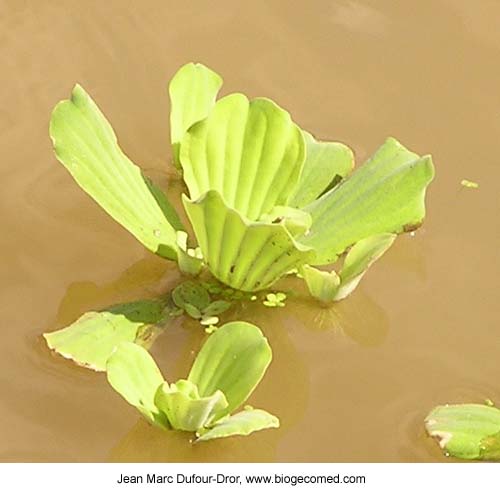
Distribution in Israel
Two developing populations of Pistia stratiotes have been
recorded in Israel since 2004: The first has developed since
mid 2005 in the Alexander river, northeast to the city of Netanya
together with Eichornia crassipes. The second population
was found in September 2005 in the Lakhish river, east of the
city of Ashdod in the southern coastal plain.
Mature individuals of Pistia
stratiotes froming a dense mat in the Lakhish river (Dec. 11th,
2005)
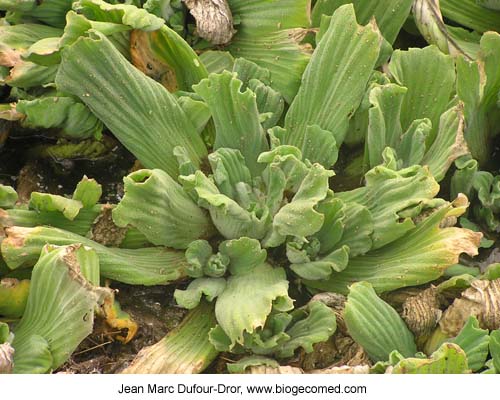
Proliferation status
The water lettuce in Israel is an 'invasive' alien according
to the terminology suggested by Richardson et al. (2000).
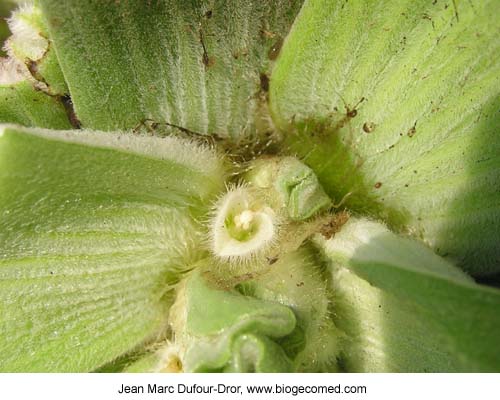
Pistia stratiotes in Israel
So far no evidence has been found of previous infestations in
rivers in Israel.
The species has been introduced in Israel presumably for ornamental
purposes. It is still sold in plant nurseries. Its’ very
rapid vegetative reproduction allows the water lettuce to completely
cover a waterbody as it does in the Lakhish river.
The water lettuce rapidly forms a compact mat on the water surface
that crowds out native species. Since it modifies water temperatures
and significantly decreases water oxygenation, the biological
diversity in infested aquatic ecosystems drops dramatically.
This invasive has been reported only very recently, so as yet
no control programs have been elaborated in Israel in order to
eradicate the water lettuce. The Ministry of Environment and
the Nature and Parks Authority have been informed of the proliferation
of Pistia stratiotes.
The threat posed by the water lettuce in aquatic ecosystems in
Israel is quite similar to that of the water hyacinth: It could
rapidly infest the few rivers and ponds exiting in the Mediterranean
region of Israel. Preventing the proliferation of the water lettuce
in Israel is a still a realistic goal for it is, so far, restricted
to only four foci of infestation.
The water lettuce in the Lakhish
river (December 11th, 2005)
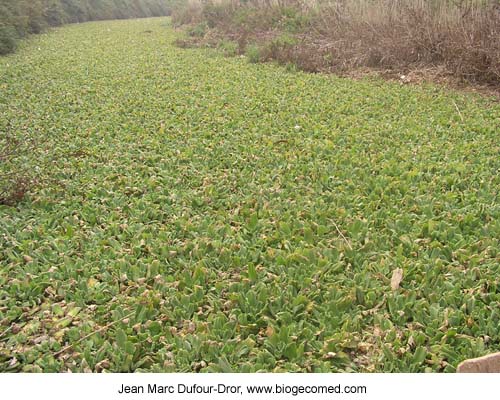
Control
The water lettuce can be removed mechanically from water bodies
with harvester machines. The most effective chemical control
requires use of diquat herbicides approved for aquatic use.
Biological control has proved quite effective with a leaf weevil
(Neohydronomus affinis) introduced in Australia and in
the USA from South America. The use of a Thailand native moth
(Spodoptera pectinicornis) has brought positive results
in the control of the water lettuce in Florida and in Texas.
Water lettuce in the Hula
region (northern Israel) (October 9th, 2006)
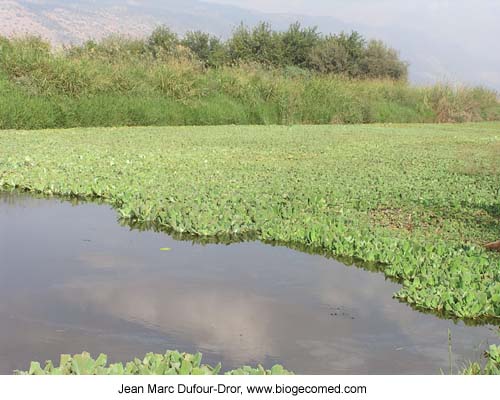
References
Den Hollander N.G., Schenk
I.W., Diouf S., Kropff M.J. & Pieterse A.H. (1999) Survival
strategy of Pistia stratiotes L. in the Djoudj National
Park in Senegal. Hydrologia 415:21-27.
Dewald L.B. & Loubinos L.P.
(1990) Seasonal growth of Pistia stratiotes L. in south
Florida. Aquatic Botany 36:263-275.
Dray F.A. & Center T.D. (1989)
Seed production by Pistia stratiotes L. (Water Lettuce)
in the United States. Aquatic Botany 33:155-160. |
